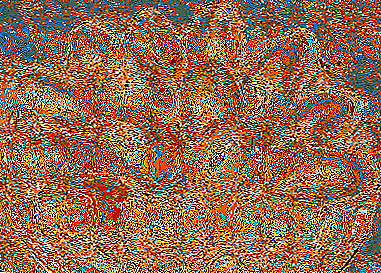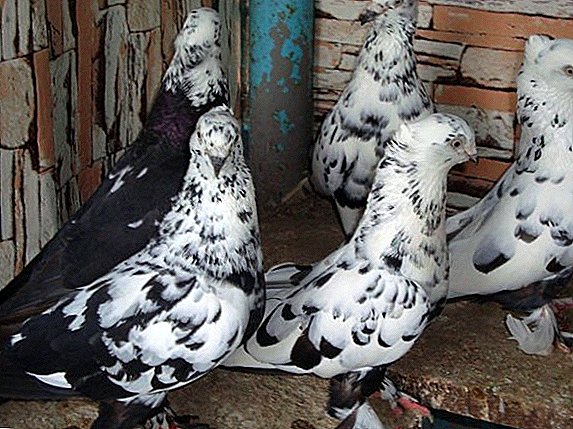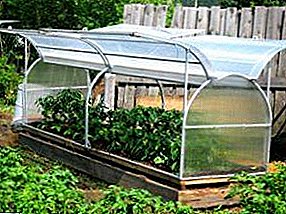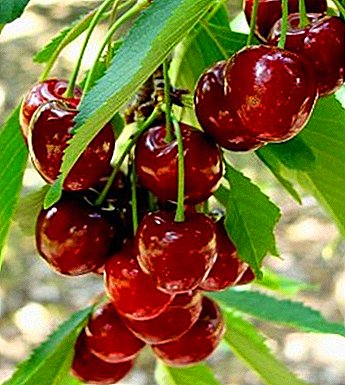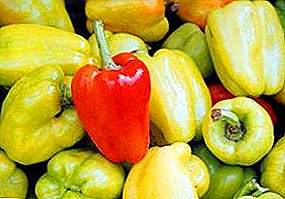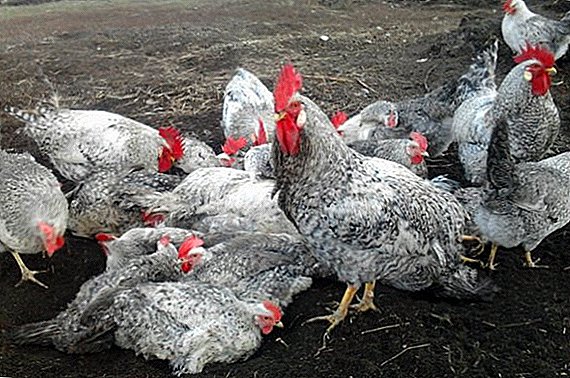 In the world there are a huge number of egg breeds of chickens. Among them, the relatively recently bred breed Borkovskaya Barvistaya is not lost. She has a number of features that make the maintenance of these chickens attractive to poultry farmers. We will try to understand them by focusing on each one individually.
In the world there are a huge number of egg breeds of chickens. Among them, the relatively recently bred breed Borkovskaya Barvistaya is not lost. She has a number of features that make the maintenance of these chickens attractive to poultry farmers. We will try to understand them by focusing on each one individually.
History reference
Borkovska Barvistaya was bred by Ukrainian breeders from the Institute of the National Academy of Agrarian Sciences of Ukraine, which is located in the village of Borki, Kharkiv region. Breeding was carried out by crossing different varieties of the Leghorn breed. The work on breeding a new breed was completed in 2005.
Important! Borkovskaya Barvistaya is a breed, not a hybrid, therefore the offspring of this bird inherits all the positive qualities of the parents.
Description and features of the breed
Outwardly, the Borkovian barvinis resemble the leggorn, which is not surprising, given their origin. Let us consider in more detail their external data and other characteristics. 
Appearance and physique
These birds are distinguished by an elongated body, a small head with a pink or red scallop of a leaf-like type, a short neck, developed yellow limbs (a grayish shade is allowed), and a bushy tail in roosters.
The breeds of chicken hens egg direction also includes: "Minorca", "Aurora Blue", "Leggorn", "Shaver", "Loman Brown", "Russian White", "Orlovskaya", "Pavlovskaya", "Ukrainian Ushanka", " Araucana ".
Thighs and lower legs are relatively small, the breast is also inexpressive, which is typical of egg breeds. The colors are mostly gray-white and mottled, but may be white or brown. The weight of the rooster can reach 2.7 kg, and the chickens - 2.1 kg.
Character
In chickens of the Borkovskaya breed Barvistaya non-conflict character, they do not suffer from aggressiveness, they calmly get along with other breeds of chickens.  However, they have a rather unpleasant for many people who have chickens in their yard, a feature - the chickens make constant noise by their clucking, and the roosters are distinguished by their vociferousness.
However, they have a rather unpleasant for many people who have chickens in their yard, a feature - the chickens make constant noise by their clucking, and the roosters are distinguished by their vociferousness.
We advise you to familiarize yourself with the rating of egg breed chickens.
Average annual egg production
Representatives of these chickens begin to rush at the age of 5 to 6 months. Their standard egg production is 260 eggs per year, but this figure can be increased. In the cold season, egg production almost does not fall.  Egg of the Borkov Breeding Barvistaya Egg. Layers produce not too large eggs, on average, weighing 55-60 g. The color of the eggshell is white-cream. The egg production of this breed does not decrease for four years.
Egg of the Borkov Breeding Barvistaya Egg. Layers produce not too large eggs, on average, weighing 55-60 g. The color of the eggshell is white-cream. The egg production of this breed does not decrease for four years.
Around mid-autumn, chickens begin to moult. During this period they cease to run. This is a natural process and, according to the breeders, the productivity of the exterminated chickens usually only increases. In addition, such a bird tolerates the winter cold better.
Hatching instinct
This instinct in this bird is fully developed, the breeding of chickens naturally does not cause any difficulties. In addition, when incubating, the proportion of surviving chickens increases. However, this figure is very high when using an incubator - more than 90%.
Conditions of detention
One of the positive qualities of the breed of chickens Borkovskaya Barvistaya is unpretentiousness to the conditions of detention. But this, of course, does not mean that they can be ignored at all.
Did you know? According to modern ideas of scientists, chickens were domesticated not for the purpose of producing eggs and meat. It is now believed that people began to catch and maintain the red jungle chickens that lived in the forests of Southeast Asia for cockfighting.

Requirements for the room
The number of birds to be kept must be chosen in such a way that they are not too crowded in the existing chicken coop. Although the bird is unpretentious, to ensure its high productivity it is necessary to eliminate sources of drafts in the hen house, and to warm the room itself.
We recommend reading about how to choose a chicken coop when buying, how to make a chicken coop and an aviary for chickens with your own hands, how to equip a chicken coop for the winter, as well as how to make a nest for laying hens.
It is advisable to cover the floor of the hen house with litter, which will have to be changed regularly. Roots for these chickens can be equipped in several levels. It is recommended to arrange nests at the rate of one nest on 6 layers.
Recommended nest sizes: width - 25 cm, depth and height - 30-35 cm. It is advisable to arrange an egg-picker. It is also necessary to provide a feeder and drinker. The optimum temperature in the room should be + 23-25 ° C. 
Courtyard for walking
For walking, it is desirable to organize an aviary in the hen house. You can also walk the bird in the fenced area, but it should be borne in mind that representatives of the Borkovsky barvista have a craving for flying over the fence, so that the fence should be higher - you can pull the grid two meters in height.
Important! A place for walking is desirable to be located on the territory infrequently visited by people, since excessive attention can cause stress in the bird, which will affect its productivity.
How to endure winter cold
The resistance of this breed to the winter cold can be characterized as quite high. It is possible not to heat the coop in winter, it is enough to warm it. However, in order to maintain high productivity of hens, it is recommended to maintain the temperature not lower than +5 ° С. For this bird, temperatures below -5 ° C are undesirable. 
What to feed
Some kind of special feeding regime for chickens of this breed is not required. The diet of these chickens does not differ from the diet of the vast majority of egg breeds.
Chickens
Chickens begin to feed crushed yolk of boiled eggs. But the second day add low-fat cottage cheese and millet. All of these ingredients should not be sticky. On the 4th-5th day, finely chopped greens are added, then grated vegetables are gradually introduced into the diet.
Learn how to feed the chickens in the first days of life.
During the first week of life, chickens are fed every 2.5-3 hours (six times a day), then the frequency of feeding decreases. At the age of one and a half months, youngsters are transferred to ordinary food. 
Adult chickens
The best diet options are special feed for egg chickens. They provide the highest bird productivity. But these chickens are quite suitable and cheaper feed: boiled crushed potatoes with the addition of greens and grated vegetables (zucchini, cucumber, beets, cabbage) or grain mixtures.
It will be useful for you to read about how to prepare feed for chickens and for adult birds with your own hands, as well as how to make feed for laying hens and how much feed the laying hen needs per day.
Under any variant of the diet, chalk and fresh greens are added to the feed, which is replaced with hay in winter. In addition, in the feed it is useful to make a little fish or meat and bone meal, but not more than 5% of the total feed.
Did you know? Chickens are very easy to hypnosis. In order to introduce this bird into a hypnotic state, it is enough, holding it on the ground, to draw a line in front of its beak with chalk (you need to carry it out from the chicken). In a state of hypnosis, the bird can be up to half an hour. It is believed that the chicken falls into this state in anticipation of death.

Poultry farmers will be interested in reading about how to germinate wheat for laying hens.
Advantages and disadvantages
Among the advantages of the Borkovskaya Barvistaya breed are the following:
- unpretentiousness to the conditions of detention;
- calm character;
- the ability to independently breed this breed;
- developed maternal instinct;
- disease resistance;
- good adaptability to various climatic conditions, including low temperatures.
These chickens and some drawbacks are not without:
- egg production is lower than that of the most productive egg breeds;
- eggs are not too large;
- the bird is prone to flying over the fence;
- quite noisy behavior of both chickens and roosters.

As you can see, the breed of chickens Borkowska Barvistaya is a good option for a private yard or farm. These birds are distinguished by unpretentiousness and, at the same time, they possess, if not outstanding, but quite worthy egg-laying. This combination makes them attractive to many poultry farmers.
Reviews from the network




